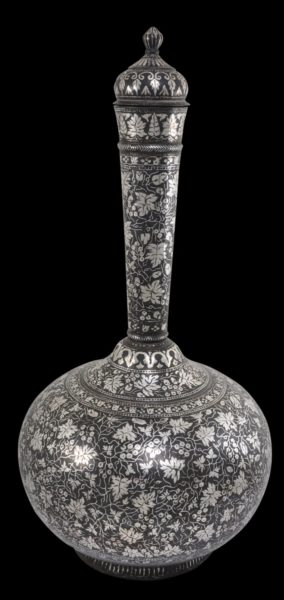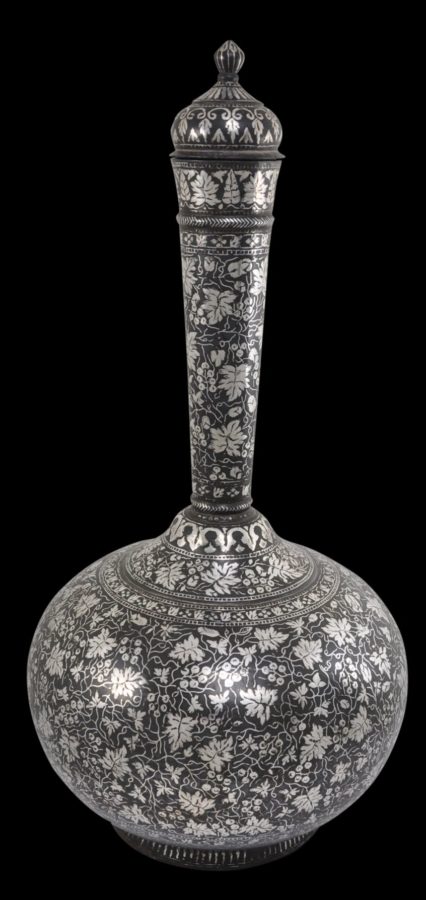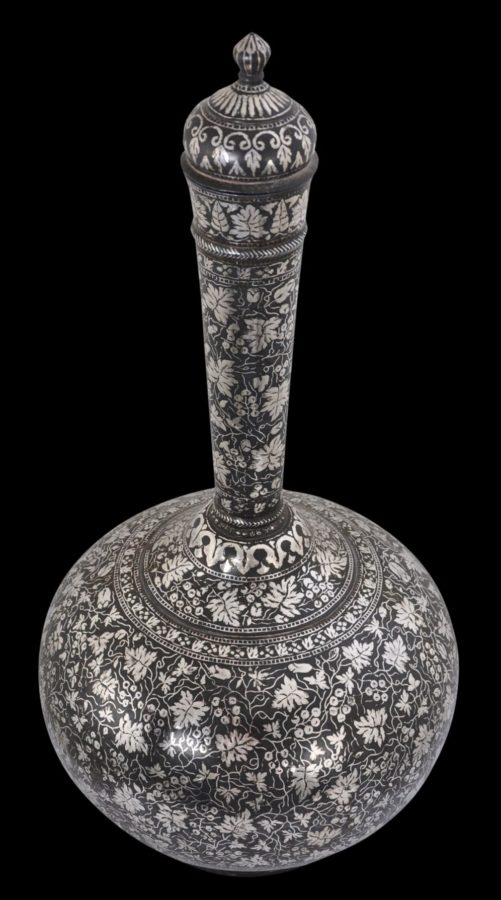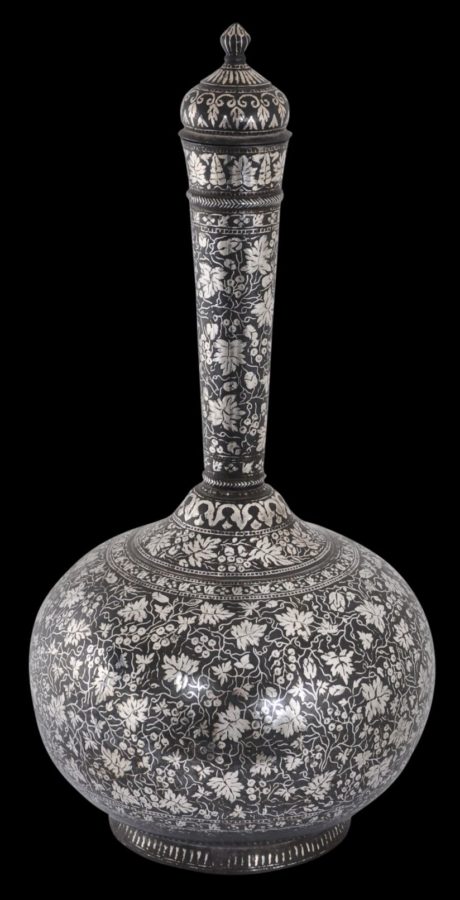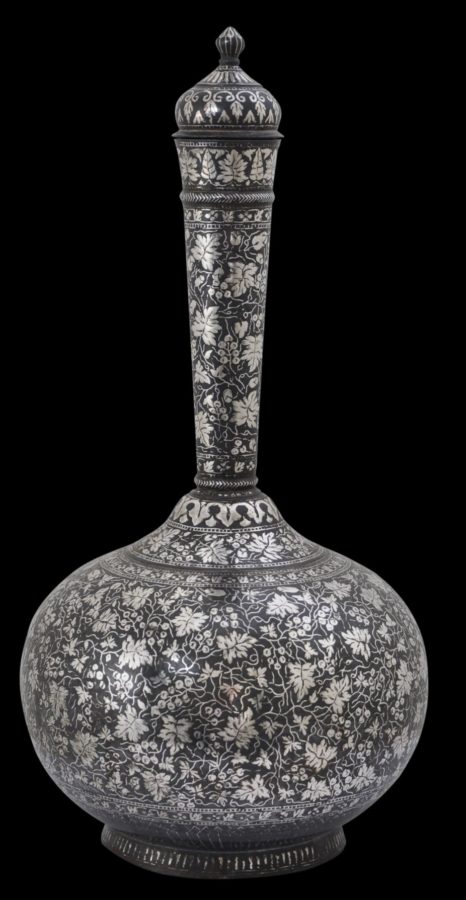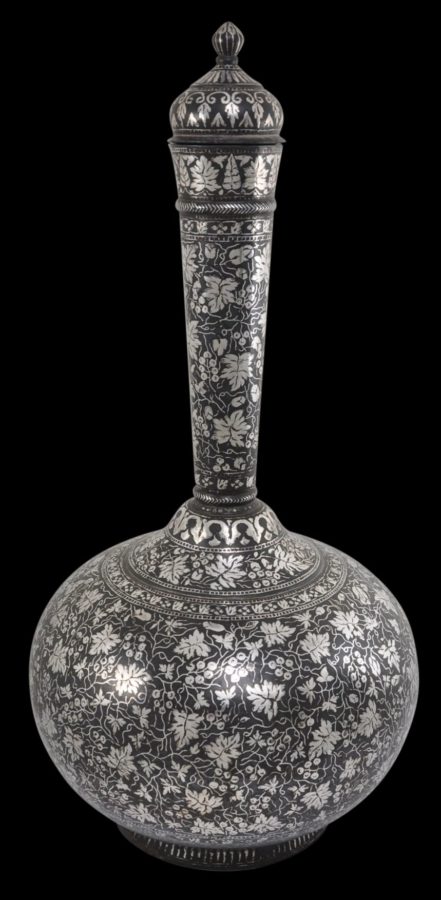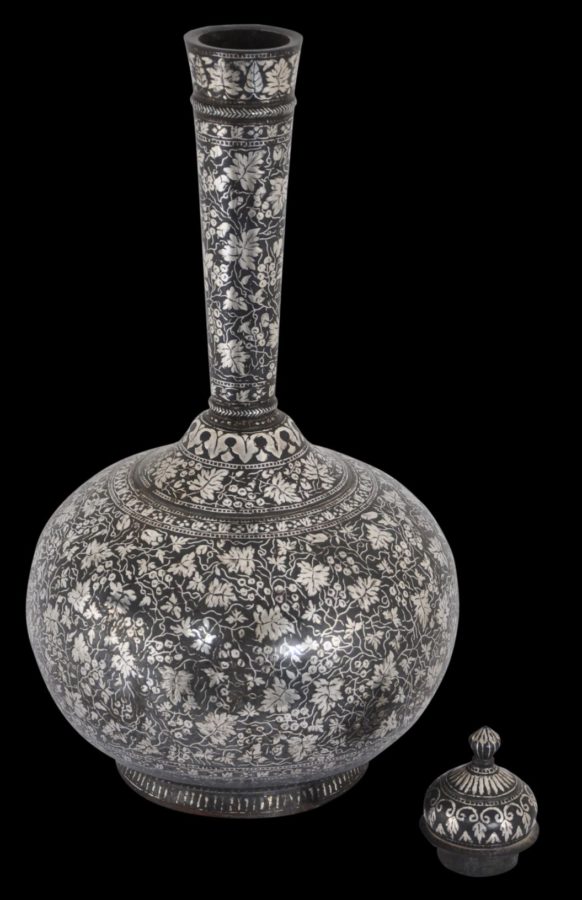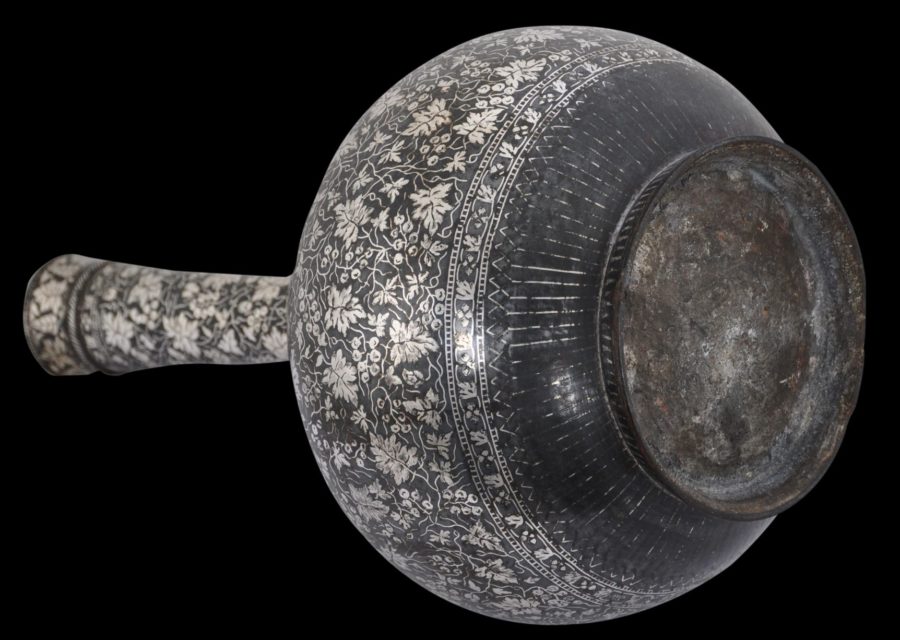This impressive and monumental flask or water goblet (surahi) is the largest flask using the tehnishan Bidri decorative technique that we have seen, at 45cm in height (the more usual height is around 30cm). It is also decorated with motifs that are relatively rare.
It sits on a low ring foot; has a bulbous, spherical body; a tapering, long neck; and a domed lid with a bud-like finial that sits in the neck.
The flask is decorated almost all over with scrolling grapevines and bunches of grapes, as is the lid. The work is very similar to a hookah base also attributed to late 18th century Deccan in the Layla S. and Mahmood Diba Collection in New York and illustrated in Zebrowski (1997, p. 239).
The lower part of the base is decorated with a register of elongated lotus petals.
Bidriware originated in the city of Bidar in the Deccan. It is cast from an alloy of mostly zinc with copper, tin and lead. The vessels so decorated are overlaid or inlaid with silver, but also sometimes brass and gold. A paste that contains sal ammoniac is then applied which turns the alloy dark black but leaving the silver, brass or gold unaffected.
The vessel here is in excellent condition. It has clear age and yet no losses to the silver inlay, nor any chips or repairs. It is a superb piece.
References
Lal, K., Bidri Ware: National Museum Collection, National Museum New Delhi, 1990.
Mittal, J., Bidri Ware and Damascene Work: in Jagdish & Kamla Mittal Museum of Indian Art, Jagdish & Kamla Mittal Museum or Art, 2011.
Sharma R.C. et al, Alamkara: 5000 Years of Indian Art, National Heritage Board (Singapore)/Mapin, 1994.
Stronge, S., Bidri Ware: Inlaid Metalwork from India, Victoria & Albert Museum, 1985.
Zebrowski, M., Gold, Silver & Bronze from Mughal India, Alexandria Press, 1997.


